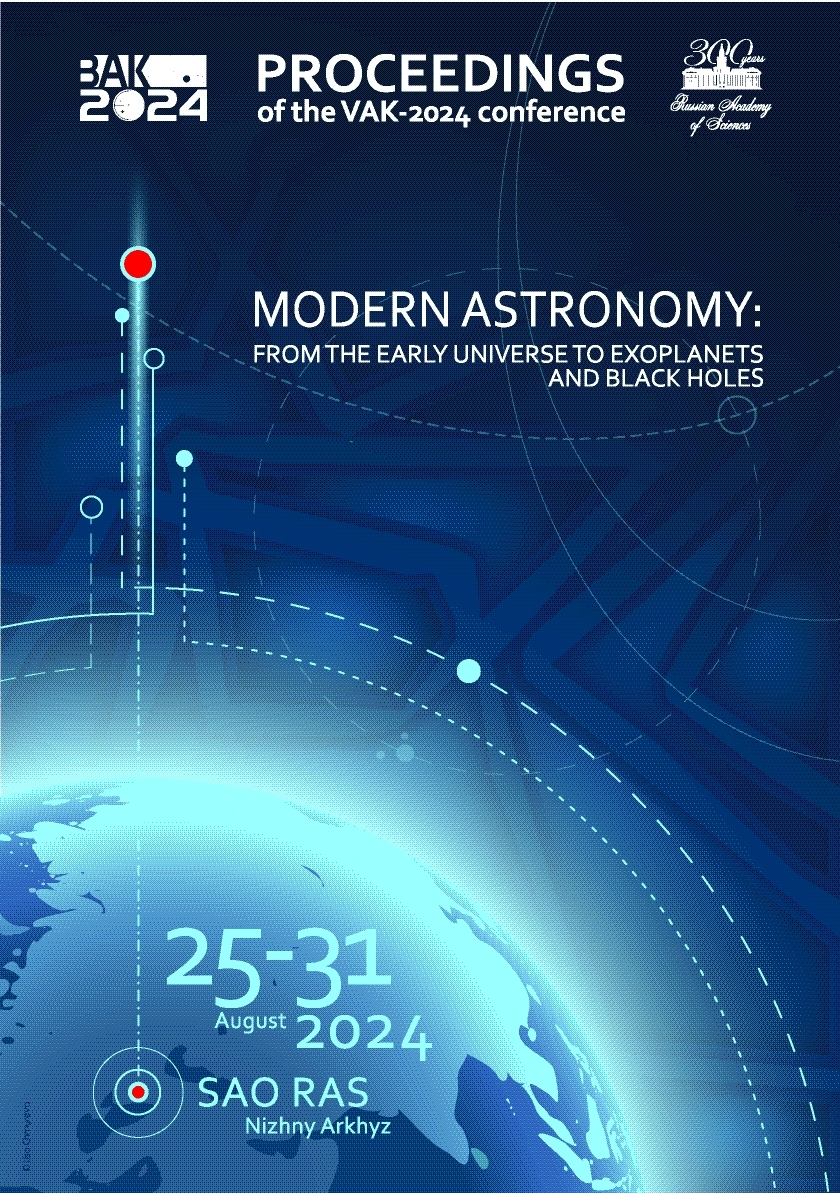Russian Federation
Institute of Physics, Pontifical Catholic University of Valparaiso
Russian Federation
UDC 53
UDC 520
UDC 521
UDC 523
UDC 524
UDC 52-1
UDC 52-6
CSCSTI 41.00
CSCSTI 29.35
CSCSTI 29.31
CSCSTI 29.33
CSCSTI 29.27
CSCSTI 29.05
Russian Classification of Professions by Education 03.06.01
Russian Classification of Professions by Education 03.05.01
Russian Classification of Professions by Education 03.04.03
Russian Library and Bibliographic Classification 2
Russian Library and Bibliographic Classification 223
Russian Trade and Bibliographic Classification 614
Russian Trade and Bibliographic Classification 6135
BISAC SCI004000 Astronomy
BISAC SCI005000 Physics / Astrophysics
We summarize the results of processing calibration telemetry sessions for the four known primary calibrators of spectral radio flux density—Cassiopeia A, Crab Nebula, Cygnus A, and Virgo A—in the autonomous observation mode with the space radio telescope (SRT) in flight. A new system of automated data processing was used, previously successfully tested in similar processing of the measurements with the SRT in 2015–2018 in the 6.2, 18, and 92 cm bands. The calibration of the SRT intrinsic noise and the internal artificial generators of the noise signal (NG) was performed for two versions of the primary scale of spectral radio flux density: the generally accepted original scale by Baars et al. suggested in 1977 and its improved version based on the results from newer publications. The main differences between the versions are related to the fact that the actual rate of secular variation in the fluxes of astronomical calibrators differs from the extrapolated values in the previously accepted scale. Preliminary results for the SRT calibration with the improved scale coincide within 10–15 percent with the results published earlier.
methods: observational
1. Baars J.W.M., Genzel R., Pauliny-Toth I.I.K., et al., 1977, Astronomy & Astrophysics, 61, p. 99
2. Ermakov A.N. and Kovalev Yu.A., 2020, Transactions of IAA RAS, 54, p. 21
3. Kovalev Yu.A., Vasil'kov V.I., Ermakov A.N., et al., 2020, Transactions of IAA RAS, 54, p. 32
4. Kovalev Yu.A., Vasilkov V.I., Ermakov A.N., et al., 2022, Astrophysical Bulletin, 77, p. 360
5. Perley R.A. and Butler B.J., 2017, Astrophysical Journal Supplement Series, 230, 1, id. 7





